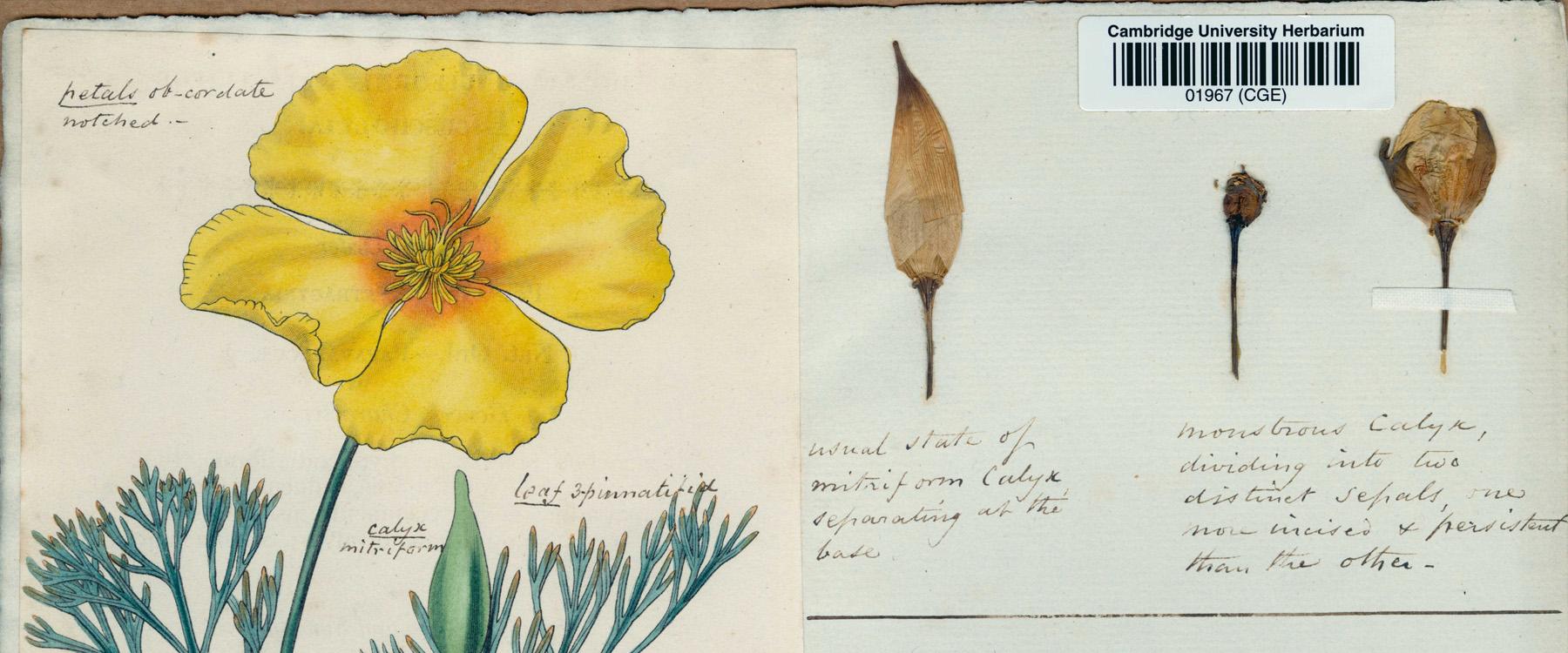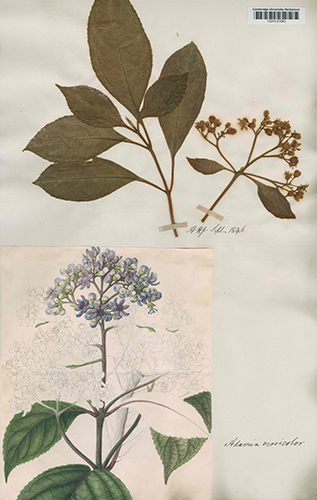Cambridge University Herbarium
Cambridge University Herbarium (international code CGE*) holds an estimated 1.1 million specimens, including vascular plants from all over the world, as well as bryophytes, fungi, algae and lichens, making it one of the largest collections of pressed and dried plant specimens in the UK.
In May 2022, the University Herbarium was awarded Designated status by Arts Council England, in recognition of the outstanding historical and scientific importance of its collections.
Herbarium collections
Cambridge University Herbarium has a rich history, dating back to the 1760s when Cambridge’s second Professor of Botany, John Martyn, gifted his Hortus Siccus (literally a “dried garden”) to the University upon his retirement, several thousand of which survive today. Other important specimens in the collection include those made by our fourth Professor of Botany, John Stevens Henslow, who is often described as ‘Darwin’s mentor’; Alfred Russel Wallace; the great ecologist Oliver Rackham; and the extensive network of collectors and collaborators who contributed to John Lindley’s enormous herbarium of an estimated 58,000 sheets.
The University Herbarium also contains just under 1,000 specimens collected by Charles Darwin on the Voyage of HMS Beagle – one of the most famous scientific expeditions in history – and an estimated 50,000 ‘type’ specimens, the specimens upon which plant names are permanently fixed. The University Herbarium also has a substantial collection of herbarium-related material including an extensive collection of original artwork and a significant botanical library which is affiliated with the University Libraries.
You can find out more about the collection, and recent discoveries, in the recordings on our YouTube channel and in this paper about the collection published in the Journal of Natural Science Collections in 2018.
Improving access to the collections
Work is underway to open up our collections and make them more accessible for all, as we develop our in-person and online outreach and engagement work, and start to digitise and publish our specimens online. High resolution images of specimens and their associated data will be made freely accessible to all online. We plan to contribute our specimen images and data to major biodiversity data aggregators, further enabling researchers from all over the world to use them in their studies of questions such as how different plant groups have evolved, the effect of changing climates on vegetation around the globe, and the stories behind the people who collected the specimens and the local knowledge of uses, and the cultural value of plants around the world and throughout history.
Visiting the Herbarium
As an environmentally controlled research archive, the University Herbarium is not generally open to the public but occasionally behind-the-scenes tours are organised and our specimens and art works are increasingly being displayed as part of exhibitions at University of Cambridge Museums and other partners.
We welcome research and specimen enquiries and endeavour to respond to all within ten working days. Researchers may consult the collections by appointment – please contact Dr Lauren Gardiner, Curator of the University Herbarium, for details.
* Cambridge University Botanic Garden also has its own herbarium (international code CGG) of over 14,000 specimens, focusing on plants grown in the Botanic Garden. You can find out more about CGG here.


